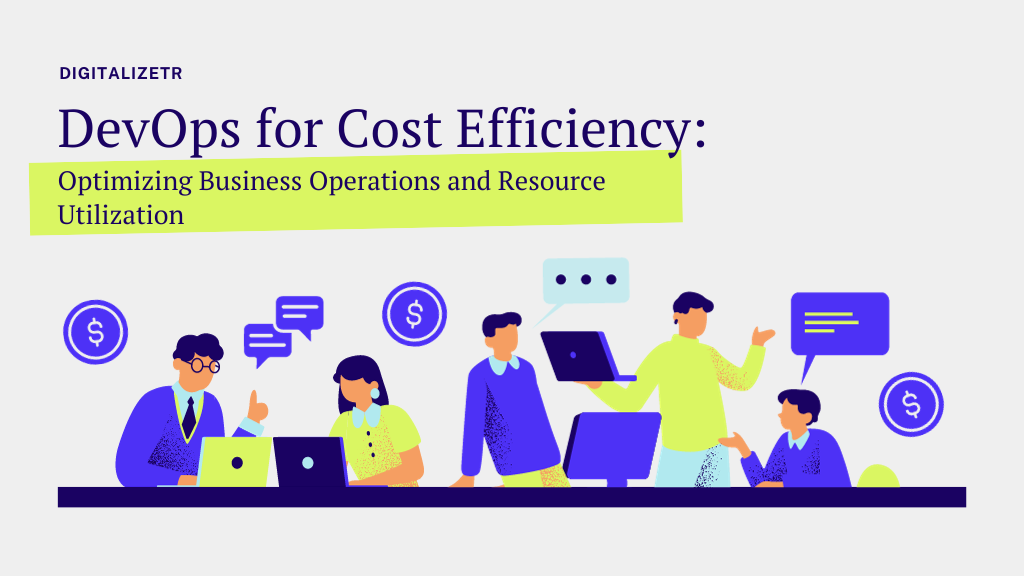DevOps is a software development methodology that aims to integrate the work of software developers and IT operations. DevOps aims to improve efficiency, quality, and security by aligning the development and deployment process with business objectives. Many companies have adopted DevOps to optimize business operations and resource utilization.
In this article, we’re going to take a look at how you can use DevOps for cost efficiency by streamlining development and operations, automating processes, and making sure you have good monitoring systems in place.
Benefits of DevOps for Cost Efficiency
DevOps is an approach to optimizing business operations and resource utilization. It can help companies save money, reduce costs, and cut expenses by improving efficiency and increasing productivity. Engaging with a DevOps consulting company can further enhance these benefits, offering specialized expertise to streamline your operations.
In this article we’ll look at some of the ways that DevOps can help you achieve these goals:
- Reduce operational expenses by improving the quality of your products or services while reducing costs associated with errors in production processes (e.g., fixing bugs after they’ve been released).
- Save money by using technology more efficiently (e.g., automating manual tasks) rather than hiring additional staff members or purchasing new equipment just because you need more hands on deck right now even if those people don’t have any experience doing what needs to be done!
The Concept of DevOps
DevOps is a concept that has gained popularity over the last few years. It’s increasingly being used by organizations as a way to improve their business processes and become more efficient. DevOps can be defined as a collaboration between developers, operations engineers, and other IT professionals who work together towards common goals.
The goal of DevOps is to deliver high-quality software faster than any other organization out there. The IT department at your company will no longer be siloed into separate groups instead they work together towards this end goal while sharing resources such as code repositories and test environments so that everyone knows what’s going on across different teams within the company at all times.
Streamlining Development and Operations
DevOps is a way of streamlining development and operations. It helps to optimize business operations and resource utilization, improve the quality of software, reduce costs, increase productivity, and enhance customer satisfaction.
The DevOps approach is based on five key principles:
- Automate everything (including configuration management)
- Keep systems simple and repeatable
- Develop in small batches
- Use measurement-driven iterative improvement rather than plan-driven continuous improvement
- Hire good people
Automation in DevOps
Automation is the process of automating tasks. This can be done through software or hardware, and it’s a key component of DevOps. Automation reduces manual effort, improves quality, and increases efficiency by reducing the time spent on repetitive tasks.
Automated testing allows developers to focus more on writing code than manually testing it afterward; this leads to higher overall productivity for your team members because they can spend less time doing things like running tests or manually verifying code quality before deployment (or even during).
Continuous Integration and Continuous Delivery (CI/CD)
Continuous Integration (CI) and Continuous Delivery (CD) are two of the most important technologies that you can use to optimize business operations and resource utilization. CI/CD can be used as part of a DevOps process, which involves automating all aspects of software development and delivery. This includes automating build processes, testing, code integration, and deployment into production environments as well as monitoring for errors or failures in these processes.
The benefits associated with using continuous integration tools include:
- Improved efficiency – automated deployments mean less downtime for your customers if something goes wrong during deployment;
- Shorter release cycles – since changes are automatically tested before being deployed there is no need for lengthy manual testing phases;
- Reduced costs – there is no need for additional staff members who would otherwise be required to manually test every change made by developers before it goes live
Monitoring and Feedback Loops
Monitoring and feedback loops are a key component of DevOps, and they’re an important part of any business. Monitoring is the process of gathering data about your business for example, how many customers are visiting your website each day. Feedback loops are the process of taking action on that data: if you see that traffic has dropped off, it would be wise to investigate why before doing anything else (like firing people).
In addition to monitoring and feedback loops being crucial components of DevOps, they’re also crucial components of successful businesses in general!
Resource Optimization in DevOps
Resource optimization is a key benefit of DevOps, and it’s easy to see why: by using resources more efficiently, you can save money on equipment and labor costs while also improving performance. Resource optimization is the process of optimizing the use of a resource such as a computer system by using it as efficiently as possible. DevOps can help with resource optimization because it provides visibility into the utilization of IT resources across an organization so that they can be utilized more efficiently.
DevOps is a software development methodology, culture, practice, and mindset. It can be thought of as an extension of agile software development that focuses on automation and communication between developers and operations teams.
DevOps aims to improve efficiency by reducing time spent on manual tasks and increasing team collaboration. This results in delivering new features faster while maintaining quality assurance standards.
Conclusion
In this article, we’ve explored the concept of DevOps and how it can help you optimize business operations and resource utilization. We outlined some of the key benefits of DevOps such as streamlining development and operations processes through automation, continuous integration and delivery (CI/CD), monitoring feedback loops, etc. We also looked at how these concepts all work together to achieve optimal efficiency within your organization.



